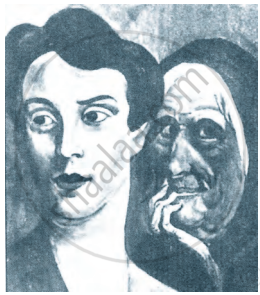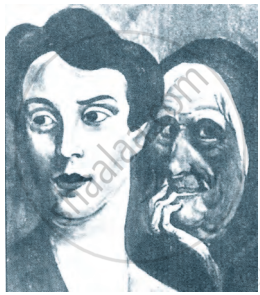Advertisements
Advertisements
Question
Discuss the main observational methods used in personality assessment. What problems do we face in using these methods?
Solution
The main observational methods used in personality assessment are interview, observation, ratings, nomination, and situational tests.
(1) Interview :- It is a commonly used method for assessing personality. This involves talking to the person being assessed and asking specific questions. Diagnostic interviewing generally involves in-depth interviewing which seeks to go beyond the replies given by the person. Interviews may be structured or unstructured depending on the purpose or goals of assessment.
In unstructured interviews, the interviewer seeks to develop an impression about a person by asking a number of questions. The way a person presents her/himself and answers the questions carries enough potential to reveal her/his personality.
The structured interviews address very specific questions and follow a set procedure. This is often done to make objective comparison of persons being interviewed. Use of rating scales may further enhance the objectivity of evaluations.
(2) Observation :- Observation of behaviour is another method which is very commonly used for the assessment of personality. Use of observation for personality assessment is a sophisticated procedure that cannot be carried out by untrained people. It requires careful training of the observer, and a fairly detailed guideline about analysis of behaviours in order to assess the personality of a given person.
For example, a clinical psychologist may like to observe her/his client’s interaction with family members and home visitors. With carefully designed observation, the clinical psychologist may gain considerable insight into a client’s personality.
(3) Behavioural Ratings :- These are frequently used for assessment of personality in educational and industrial settings. Behavioural ratings are generally taken from people who know the assessee intimately and have interacted with her/him over a period of time or have had a chance to observe her/him. They attempt to put individuals into certain categories in terms of their behavioural qualities. The categories may involve different numbers or descriptive terms. It has been found that use of numbers or general descriptive adjectives in rating scales always creates confusion for the rater. In order to use ratings effectively, the traits should be clearly defined in terms of carefully stated behavioural anchors.
(4) Nomination :- This method is often used in obtaining peer assessment. It can be used with persons who have been in long-term interaction and who know each other very well. In using nomination, each person is asked to choose one or more persons of the group with whom s/he would like to work, study, play or participate in any other activity. The person may also be asked to specify the reason for her/his choices.
(5) Situational Tests :- A variety of situational tests have been devised for the assessment of personality. The most commonly used test of this kind is the situational stress test. It provides
us with information about how a person behaves under stressful situations. The test requires a person to perform a given task with other persons who are instructed to be non-cooperative and interfering. The test involves a kind of role playing. The person is instructed to play a role for which s/he is observed. A verbal report is also obtained on what s/he was asked to do. The situation may be realistic one, or it may be created through a video play.
Problems faced in using these methods :-
Observation and interview methods are characterised by the following limitations :-
- Professional training required for collection of useful data through these methods is quite demanding and time-consuming.
- Maturity of the psychologist is a precondition for obtaining valid data through these techniques.
- Mere presence of the observer may contaminate the results. As a stranger, the observer may influence the behaviour of the person being observed and thus not obtain good data.
Behavioural ratings suffers from the following major limitations :-
(1) Raters often display certain biases that colour their judgments of different traits. For example, most of us are greatly influenced by a single favourable or unfavourable trait. This often forms the basis of a rater’s overall judgment of a person. This tendency is known as the halo effect.
(2) Raters have a tendency to place individuals either in the middle of the scale (called middle category bias) by avoiding extreme positions, or in the extreme positions (called extreme response bias) by avoiding middle categories on the scale. These tendencies can be overcome by providing raters with appropriate training or by developing such scales in which the response bias is likely to be small.
Nominations received may be analysed to understand the personality and behavioural qualities of the person. This technique has been found to be highly dependable, although it may also be affected by personal biases.
APPEARS IN
RELATED QUESTIONS
What is meant by structured personality tests? Which are the two most widely used structured personality tests?
Explain how projective techniques assess personality. Which projective tests of personality are widely used by psychologists?
The school counsellor told Simran that people are happiest and perform their best when their personal traits and characteristics match their occupation. To assess this, she has to go through a psychological test. Her counsellor is most likely to use the ______ test.
A teacher might assume that a well-behaved student is also bright and motivated before they have objectively evaluated the student's capacity in these areas. Identify the phenomenon.
The Minnesota Multiphasic Personality Inventory helps to diagnose ______.
- Neuroticism, psychoticism
- Sociability, PTSD
- Psychasthenia, schizophrenia
- Paranoia, depression
Choose the correct option.
Refer to the picture given below and answer the question by choosing the most appropriate option:

Which type of personality assessment is being depicted in the above picture?
Refer to the picture given below and answer the question by choosing the most appropriate option:

Identify the name of the test from the options given below.
Refer to the picture given below and answer the question by choosing the most appropriate option:

Which of the following statements are NOT true of this test?
- In the first phase, called performance proper, the subjects are shown the cards and are asked to tell what they see in each of them.
- The second phase is called inquiry.
- Each picture card depicts one or more people in a variety of situations.
- The subject is asked to tell a story describing the situation presented in the picture.
Choose the correct option:
Refer to the picture given below and answer the question by choosing the most appropriate option:

Which of the following is NOT a drawback of this test?
Refer to the picture given below and answer the question by choosing the most appropriate option:

Identify the stimuli that are used in such kinds of tests as given in the above picture.
If an individual is fat, soft and round along with a temperament that is relaxed and sociable, then he/she is said to have the characteristics of an ______.
Gurmeet was given a personality test to assess how he expresses aggression in the face of a frustrating situation. Identify the test most suitable for this.
Which of the following is a projective technique for assessing personality?
The Thematic Apperception Test (TAT) was developed by ____________.
Which is not the part of "on the job training"?
The personality assessment technique that is commonly used to gather data from people who know the client very well is ______.
The process of blocking or thwarting needs causes frustration in human beings.
The emotions of the child during the infancy are
Who among the following is well known personality theorist?
Which technique is used by T.A.T.?
Who used ink-block test first?
The study of family relations is the object of ______
PF study is the part of ______
The term multi-dimensional is related to ______
Dismissing anxiety provoking behaviours or thoughts from unconscious is known as
Sixteen Personality Factor (16 PF) Questionnaire was developed by ______.
The Thematic Apperception Test (TAT) was developed by ______.
Explain the characteristics of indirect techniques that are used to assess personality. Describe any two such tests.
Why is behavioural analysis conducted to overcome stress?
- To find malfunctioning behaviour.
- To find the consequent operations of the adaptive behaviour.
- To identify the antecedents of faulty learning.
- To identify factors that maintain faulty learning.
